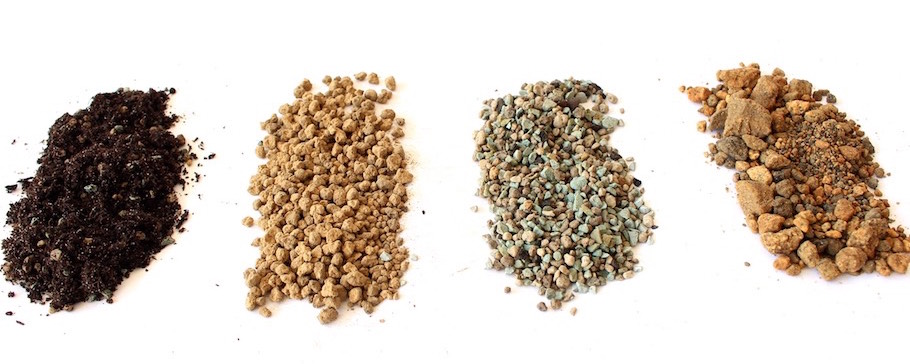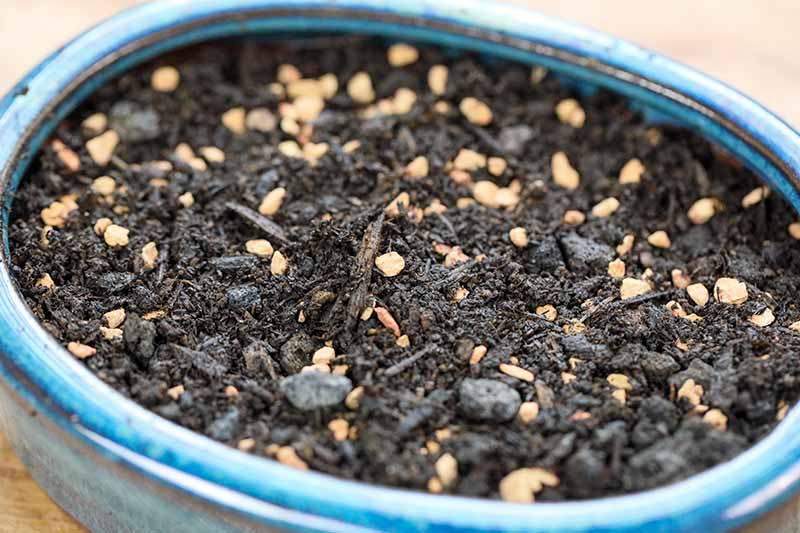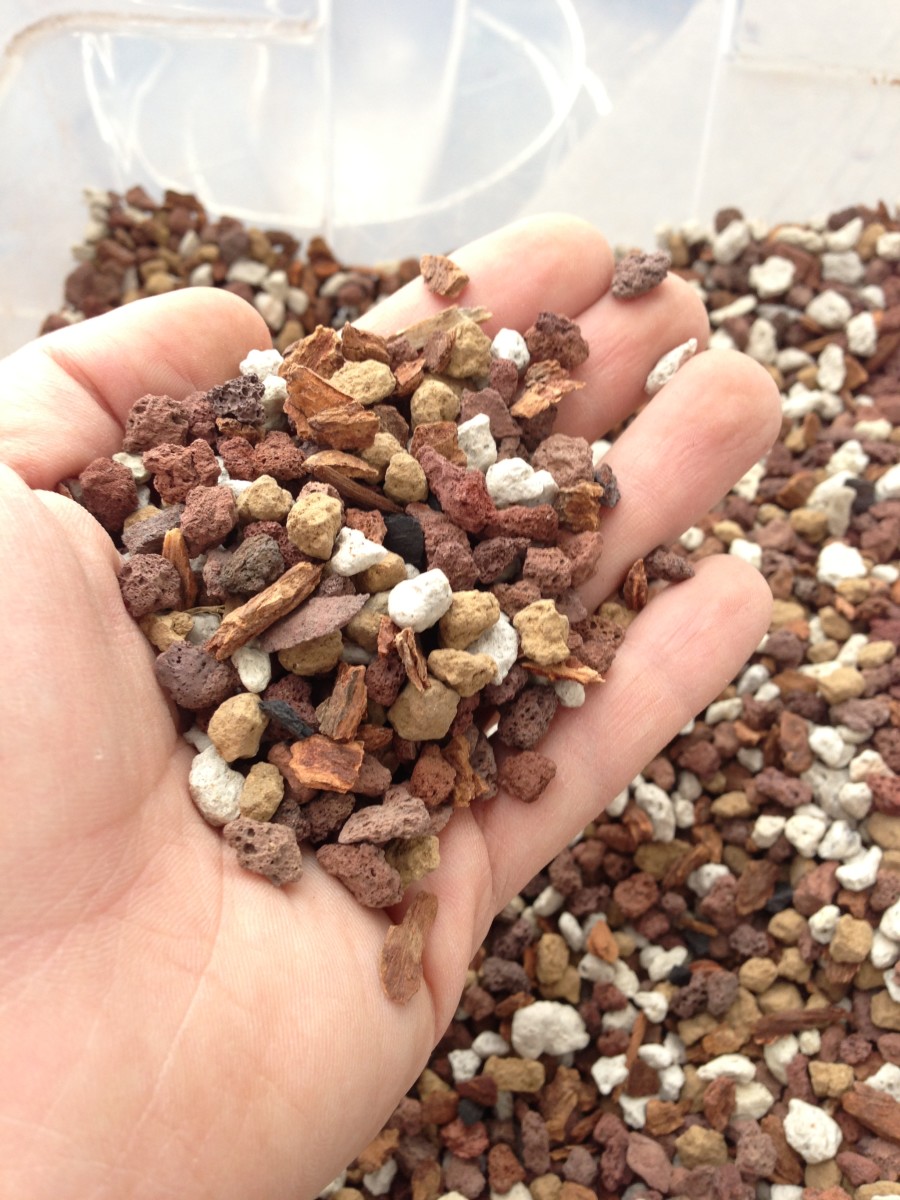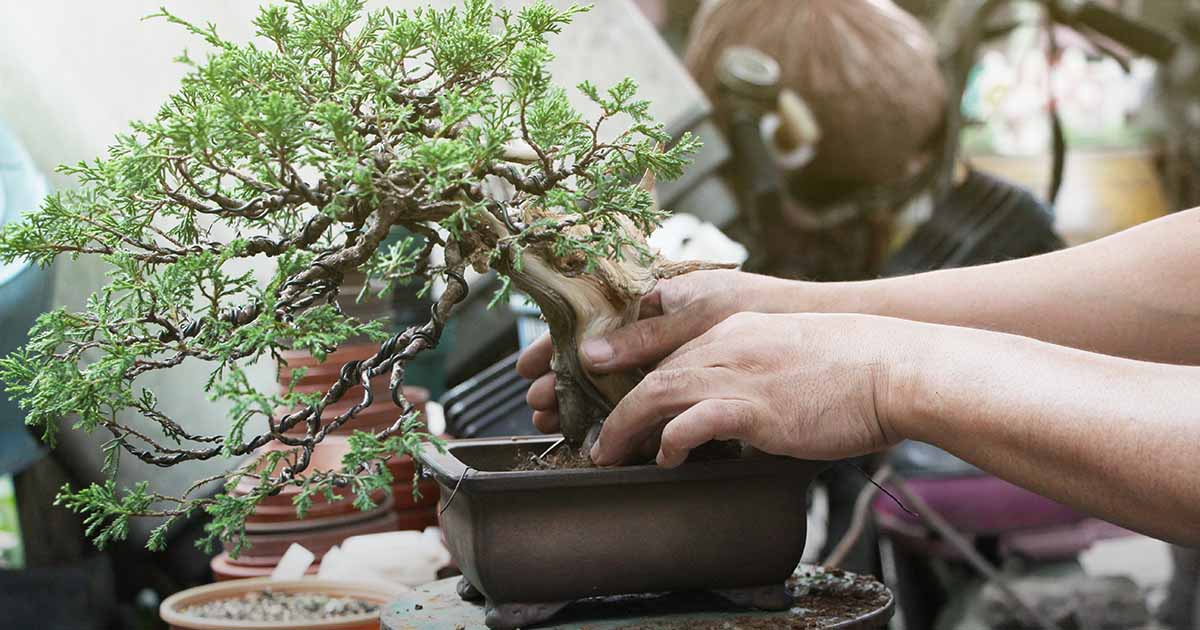Detailed Notes on Organic or Inorganic Bonsai Soils
If you have ever been captivated from the art of bonsai, you may be asking yourself if Exclusive soil is necessary to cultivate these miniature masterpieces. The solution is Indeed! Exclusive soil is important for the overall health and vitality of bonsai trees.In this article, we will check out the differing types of soil and substrates Employed in bonsai cultivation, which include natural and inorganic alternatives.
We'll also discover recommended soil mixtures for various bonsai species, such as deciduous, coniferous, and indoor types. From akadama and pumice to moss and river sand, we'll dive into your fascinating globe of bonsai soil and assist you to realize why it's a crucial part of cultivating these exquisite trees.

Bonsai soil
What is bonsai soil?
Bonsai soil is a specialized type of soil that is specifically formulated for growing and maintaining bonsai trees. Unlike regular garden soil, bonsai soil is well-draining and provides the necessary nutrients and moisture balance for the tree's root system. The composition of bonsai soil is carefully designed to meet the unique needs of bonsai trees, ensuring their health and longevity.
The importance of bonsai soil
The choice of soil plays a crucial role in the success of your bonsai tree. The right soil provides optimal drainage, allowing excess water to flow freely and preventing root rot. It also promotes a healthy and well-developed root system, which is essential for the overall health and growth of the tree. Bonsai soil retains moisture while allowing air to reach the roots, striking the perfect balance for the tree's needs. Choosing the right bonsai soil is essential for maintaining a healthy and thriving bonsai tree.
Bonsai substrates
What are bonsai substrates?
Bonsai substrates refer to the different materials that can be used to create the ideal soil composition for bonsai trees. These substrates are carefully chosen to meet the specific needs of different species of bonsai trees and to ensure proper water drainage and nutrient availability.
Different types of bonsai substrates
There are various types of bonsai substrates available, each with its own unique characteristics and benefits. Some common bonsai substrates include:
- Organic materials: These include ingredients such as bark, peat moss, and coconut coir. Organic substrates help retain moisture and provide essential nutrients to the bonsai tree.
- Inorganic materials: These contain elements like pumice, lava rock, and akadama. Inorganic substrates supply great drainage, ensuring that extra h2o isn't going to accumulate across the roots with the bonsai tree.
- Soil amendments: They are substances that are additional towards the soil mixture to boost its Attributes. Examples of soil amendments consist of perlite, vermiculite, and sand. They Increase the soil's aeration, drinking water-holding capacity, and nutrient availability.
By being familiar with the differing types of bonsai substrates as well as their Homes, you are able to select the most fitted a single in your bonsai tree's requires.
Organic and natural or Inorganic Soils
Natural soils for bonsai
Natural soils for bonsai are composed of purely natural products like bark, peat moss, coconut coir, and compost. These components give a wealthy supply of nutrients for your bonsai tree and endorse healthier root development. Natural soils even have superior h2o retention Qualities, making certain which the tree gets sufficient dampness amongst watering sessions. However, it's important to notice that natural and organic soils could break down over time and develop into compacted, leading to bad drainage and probable root challenges.
Inorganic soils for bonsai
Inorganic soils for bonsai encompass supplies like pumice, lava rock, akadama, and soil amendments like perlite or vermiculite. These resources have superb drainage Attributes, preventing waterlogged soil and advertising and marketing aeration around the roots. Inorganic soils are most well-liked by many bonsai lovers because of their longevity and ability to supply a stable setting for the bonsai tree's root program. Nevertheless, They could need additional Repeated watering and additional fertilization, as they do not maintain just as much moisture or nutrients as natural and organic soils.
Benefits and drawbacks of applying natural and inorganic soils for bonsai
Picking among natural and organic and inorganic soils for your personal bonsai tree is determined by a variety of elements, such as the specific species of tree, your local climate, and private Tastes. Listed below are the positives and negatives of each:
Organic and natural soils:
- Pros: Give nutrients, fantastic water retention, encourage balanced root development.
- Downsides: Might break down as time passes, possible for very poor drainage Otherwise properly maintained.
Inorganic soils:
- Pros: Superb drainage, extensive-lasting, stable setting for roots.
- Cons: Much less water retention, may possibly demand far more Repeated watering and fertilization.
By taking into consideration the advantages and disadvantages of equally organic and natural and inorganic soils, you may make an knowledgeable decision determined by the precise needs of your respective bonsai tree.
Soil components
Key components of bonsai soil
Bonsai soil is usually made up of a few most important components: grit, natural and organic make any difference, and clay. These parts perform together to generate The perfect soil structure for your bonsai tree's root process.
- Grit: Grit, for instance sand or perlite, provides drainage and aeration in the soil. It helps avert waterlogging and makes it possible for air to get to the roots.
- Natural and organic matter: Organic make any difference, including compost or bark, delivers nutrients to the bonsai tree. Furthermore, it aids retain moisture and Enhance the soil's overall structure.
- Clay: Clay particles deliver some h2o retention qualities and help bind the soil jointly. Nonetheless, too much clay may lead to lousy drainage and compaction.
Position of every soil component
Each soil part plays a vital purpose in developing a well-well balanced and healthier surroundings for the bonsai tree's roots.
- Grit: Grit presents the required drainage and aeration inside the soil. It helps prevent the roots from sitting down in stagnant h2o, minimizing the risk of root rot and promoting Over-all root wellness.
- Organic and natural make a difference: Natural issue offers essential nutrients to your bonsai tree. It aids in dampness retention and contributes to the general structure in the soil.
- Clay: Clay particles assistance bind the soil jointly and supply some h2o retention capability. However, it's important to balance the level of clay in order to avoid problems like weak drainage and compaction.
By knowing the roles of each and every soil part, you are able to develop a well balanced bonsai soil mix that satisfies the specific needs of your tree.

Recommended Bonsai soil mixtures
Common bonsai soil mixtures
There are several common bonsai soil mixtures that have been proven effective for various types of bonsai trees. These mixtures typically consist of a combination of inorganic substrates, organic matter, and soil amendments.
Some of the commonly used bonsai soil mixtures include:
- Akadama, pumice, and lava rock: This mixture is popular among bonsai enthusiasts for its excellent drainage and water retention properties.
- Akadama, lava rock, and natural make any difference: This mixture brings together the benefits of inorganic substrates While using the nutrient-prosperous Qualities of organic make any difference.
- Pumice, perlite, and bark: This mixture provides fantastic drainage and aeration although retaining some humidity and delivering nutrients.
They're only a few examples of bonsai soil mixtures, and the ideal combination will count on the particular requires of your bonsai tree as well as your climate.
Components to take into account when picking a bonsai soil mixture
When choosing a bonsai soil combination, it is important to look at the subsequent things:
- Species of bonsai tree: Various species have different dampness and nutrient requirements. Exploration the specific wants within your tree to pick a soil combination that satisfies its needs.
- Weather: The local weather you reside in can affect the humidity retention Qualities with the soil. Consider the common humidity and temperature in your area when choosing a soil mixture.
- Watering practices: Your own watering behaviors and plan need to align While using the soil mixture you decide on. Some mixtures have to have far more Repeated watering, while some keep dampness for for a longer time durations.
- Budget: Some soil parts might be more expensive than Some others. Think about your finances when picking a soil mixture.
By getting these variables into consideration, you could choose a bonsai soil mixture that provides the most effective expanding situations for your tree.
Deciduous Bonsai soil
Finest soil composition for deciduous bonsai
Deciduous bonsai trees, like maple or birch, have unique soil needs to assist their expansion and health. The very best soil composition for deciduous bonsai commonly includes a mixture of organic make any difference, inorganic substrates, and soil amendments.
A encouraged soil composition for deciduous bonsai may well contain:
- Akadama: Presents fantastic h2o retention while permitting for drainage. Additionally, it releases nutrients slowly and gradually after a while.
- Pumice: Promotes aeration and drainage from the soil, protecting against waterlogging.
- Bark or peat moss: Provides organic matter for the soil, offering nutrients and dampness retention.
This soil composition ensures that the roots of deciduous bonsai trees receive the right stability of moisture, nutrients, and oxygen for ideal growth.

Coniferous and Pine soil
Ideal soil mixture for coniferous and pine bonsai
Coniferous and pine bonsai trees have specific soil requirements due to their water retention needs and preference for acidic soil. An ideal soil mixture for coniferous and pine bonsai should provide good drainage while retaining moisture and maintaining the desired pH level.
A recommended soil mixture for coniferous and pine bonsai may include:
- Akadama: Provides excellent water retention while allowing for sufficient drainage. It releases nutrients slowly over time.
- Pumice: Encourages aeration and drainage within the soil, avoiding waterlogged roots.
- Peat moss: Provides organic make a difference and acidity for the soil, producing a great pH amount for coniferous and pine trees.
This soil combination ensures that the roots of coniferous and pine bonsai trees acquire the right balance of dampness, nutrients, and acidity for their certain needs.
Akadama
What is akadama?
Akadama can be a style of clay soil that may be greatly Utilized in bonsai cultivation. It's known for its superb h2o retention properties, which make certain a gentle source of dampness into the bonsai tree's roots. Akadama is likewise prized for its capability to release nutrients slowly and gradually after some time, supplying a regular source of nourishment to the tree.
Great things about using akadama in bonsai soil
Making use of akadama in bonsai soil features several benefits:
- H2o retention: Akadama has Fantastic water retention Houses, permitting it to carry dampness devoid of getting to be waterlogged. This makes sure that the bonsai tree's roots receive a constant source of water, advertising and marketing healthier progress.
- Nutrient launch: Akadama bit by bit releases nutrients in the soil after a while, offering a dependable source of nourishment for that bonsai tree. This minimizes the need for Recurrent fertilization and can help keep a well balanced nutrient profile.
- Aeration: Inspite of its drinking water retention abilities, akadama also gives adequate aeration on the bonsai tree's roots. It allows air to get to the root system, protecting against concerns including root rot on account of deficiency of oxygen.
By incorporating akadama into the bonsai soil, you may produce an best expanding natural environment in your tree, guaranteeing its health and vitality.

Lava rock
How lava rock benefits bonsai soil
Lava rock is a popular component in bonsai soil mixtures due to its excellent drainage and aeration properties. It is typically used in conjunction with other substrates to create the ideal soil composition for bonsai trees.
The benefits of lava rock in bonsai soil include:
- Drainage: Lava rock provides excellent drainage, preventing waterlogging and ensuring that excess water flows freely through the soil. This helps prevent root rot and provides a healthy environment for the roots to thrive.
- Aeration: The porous nature of lava rock will allow air to circulate in the soil, providing oxygen on the bonsai tree's root procedure. Right aeration is essential for healthier root enhancement and Total tree development.
- Longevity: Lava rock can be a durable materials that doesn't stop working very easily. This makes certain that the soil structure remains steady after a while, decreasing the necessity for Recurrent soil replacements.
Lava rock is accessible in different sizes and shapes, enabling for customization determined by the specific demands within your bonsai tree and soil needs.
Different types of lava rock
There are actually different types of lava rock that could be Employed in bonsai soil mixtures, like:
- Black lava rock: Black lava rock is often a typically utilised substance in bonsai soil mixtures. It provides fantastic drainage Homes and adds an aesthetic factor to the overall presentation of the bonsai tree.
- Crimson lava rock: Pink lava rock is another well-known option in bonsai soil mixtures. It offers similar drainage and aeration benefits as black lava rock but has a definite reddish shade that provides Visible desire towards the container.
Equally black and red lava rocks are commonly readily available and will be easily included into your bonsai soil mixture.
Potting
Necessary methods for successful bonsai potting
Potting is usually a significant method in bonsai cultivation, because it right impacts the wellness and growth of the tree's roots. Here are some vital strategies for prosperous bonsai potting:
- Choose the proper pot sizing: Choose a bonsai pot that enables for root growth even though however delivering a snug match. Stay away from pots which can be also big, as they can result in too much soil humidity and bad root development.
- Use bonsai wire: Secure the tree while in the pot using bonsai wire to make certain balance. This prevents the tree from shifting or turning out to be uprooted throughout watering or sturdy winds.
- Trim and unfold the roots: Prior to potting the bonsai tree, cautiously trim and spread out the roots. This encourages outward expansion and helps prevent root tangling or root-certain troubles.
- Include mesh screens: Position mesh screens above the drainage holes at The underside in the pot to stop soil erosion and make certain suitable drainage.
- Use clean bonsai soil: When potting, often use refreshing bonsai soil to offer the mandatory nutrients and optimal expanding problems to the roots.
By following these necessary guidelines, you'll be able to make certain An effective potting method and promote the overall health and fitness and advancement of your bonsai tree.
The part of bonsai pots in soil dampness Manage
Bonsai pots Enjoy an important part in soil moisture Management, right impacting the wellness and expansion on the tree. Bonsai pots are generally shallow and also have drainage holes, making it possible for excessive drinking water to flee and preventing the soil from getting to be waterlogged.
The design of bonsai pots encourages evaporation and air circulation, which will help control soil dampness concentrations. The shallow depth and vast opening on the pot expose more area location on the soil on the air, aiding in humidity evaporation. This stops the roots from sitting in excessively wet soil, cutting down the chance of root rot as well as other h2o-relevant problems.
Also, website the drainage holes in bonsai pots make it possible for any excessive water to escape, preventing waterlogged soil and endorsing aeration across the roots. Good aeration is essential for the health and enhancement of the basis procedure, ensuring the bonsai tree gets the required oxygen for growth.
Through the use of bonsai pots designed for powerful humidity Manage, you may produce a good ecosystem to your bonsai tree's roots and website boost its overall wellness and vitality.
In summary, selecting the right bonsai soil is important with the achievement and overall health of your bonsai tree. Knowing the differing types of bonsai substrates, the role of natural and inorganic soils, The crucial element parts of bonsai soil, and the various advised soil mixtures will let you offer the ideal rising conditions to your bonsai tree. No matter if there is a deciduous or coniferous bonsai, incorporating supplies like akadama and lava rock can boost the soil's drainage and nutrient availability. Furthermore, being attentive to potting approaches and employing bonsai pots suitable for moisture Handle will even more aid the flourishing growth of one's bonsai tree. With suitable knowledge and implementation of bonsai soil tactics, you are able to take pleasure in the splendor and artistry of bonsai cultivation For some time to return.
